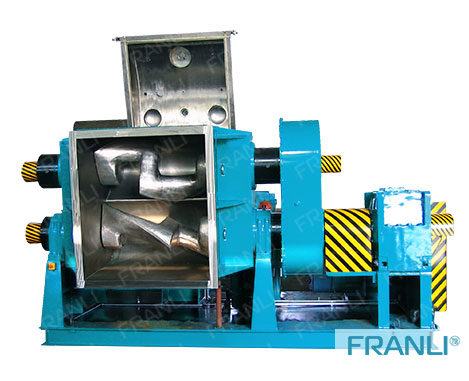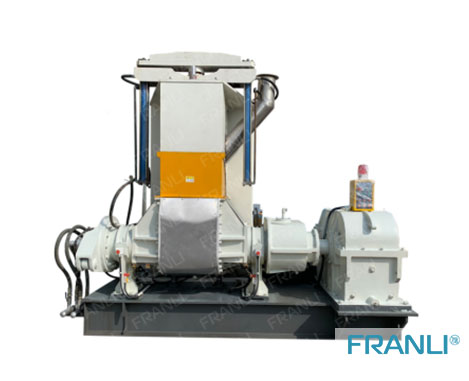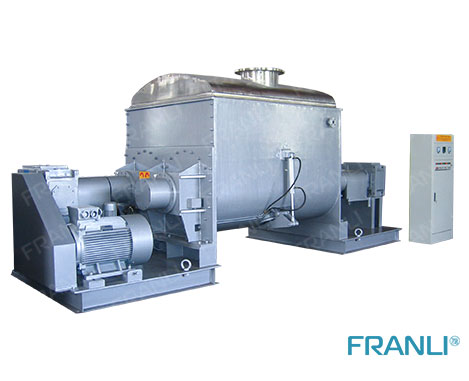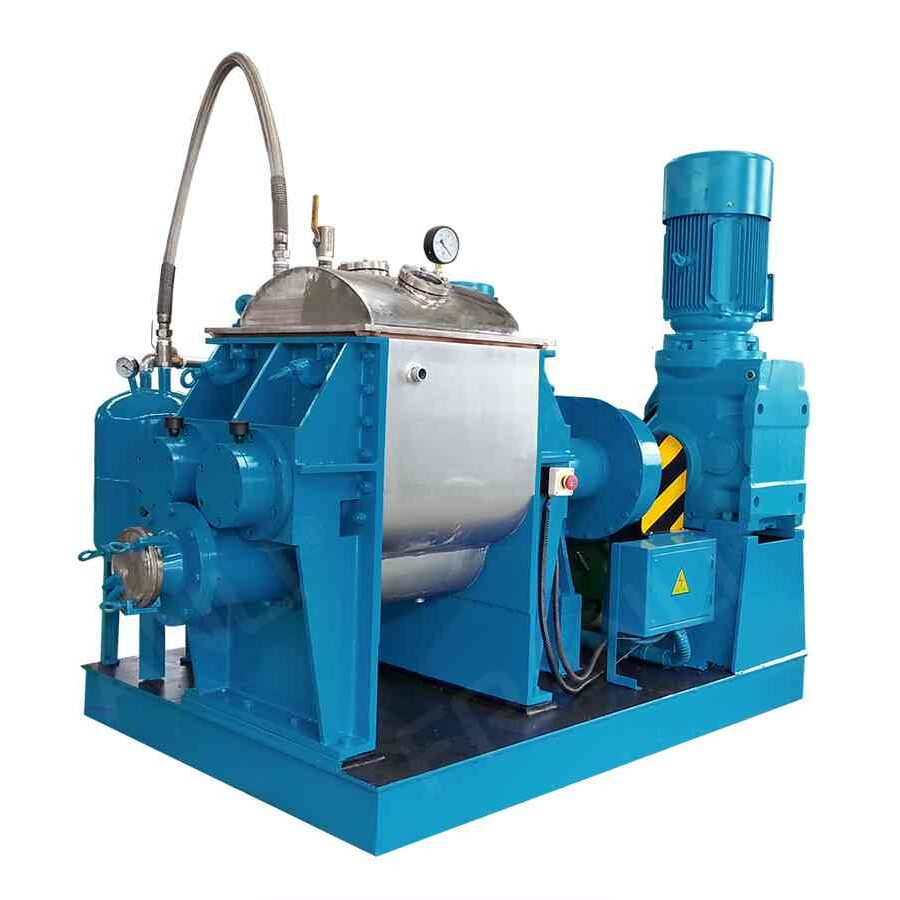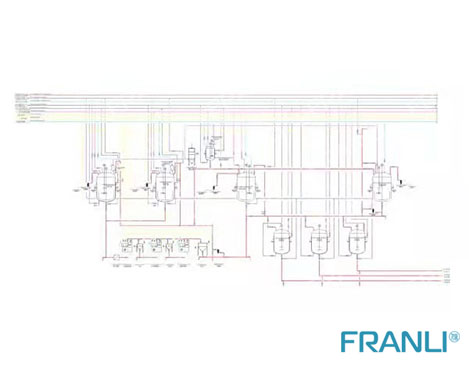Z Blade Mixer|Shearing and mixing
The sigma mixer extruder works best in the mixing of adhesives, explosives, putties, sealants, cake dough, glass fiber resin dough, metal powder, silicone rubber, butyl rubber, food and confectionery products, molds, soaps and detergents, charcoal paste, gaskets, pencil gum gel, cherries, sugar pastes, chemicals, hot melts, plastics, viscous rubber solutions, chewing gums, inks and pigments, putties, crayons and pencils, magic bread, refractories and many more.
Kneading and mixing of materials with high viscosity work best with a sigma mixer extruder. A jacket arrangement is placed between the sigma blade and the mixing tank to enhance the heating and cooling.
Advantages of Z Blade Mixer:
- low grinding fineness
- Wide range of applications
- high working efficiency
Application

Coating

Cosmetic

Battery

Graphite

Agrochemistry

Adhesives
Hot sale Kneader
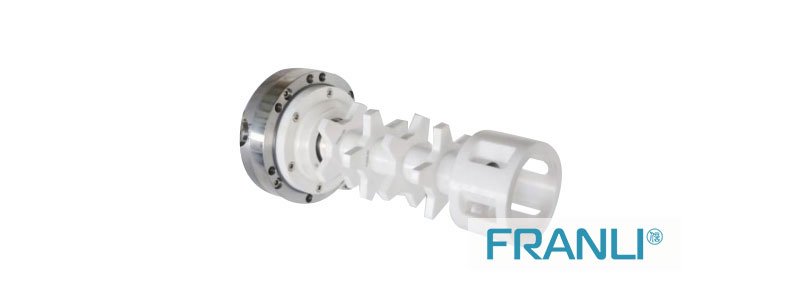
• Easy installation of the bead mill machine: The best features of this bead mill machine are: You can easily install it wherever you want. This task is so simple, and effortless. And due to this feature, it is extremely popular among other equipment. You can find the bead mill working principle so effective, and you can perform all the mixing tasks effectively without adding so much effort. As this machine is very bulky and cheap, it needs only a few minutes to install. In this way, you can reduce the labor charges and other exhausting jobs. So, you can stay worry-free about how to install this machine? As the company has made this task easier for you.
• Efficient work performance of this bead mill machine: As we know, the bead mill working principle has been created in such a way that you can achieve higher and efficient work performance on this bead mill machine. If you are looking for quality and stable work, these bead mill machines are the best option to get a consistent mixture of any particular material. You can use this bead mill for paint, ink, and coating industries. And, it is a comfortable and easy method to perform all the mixing and dispersing activities without wasting so much time. So, here bead mill working process is so necessary to obtain the desired results for the company.
• Contains grinding media of 2-3 mm size: It is the necessary feature of the bead mill working process as it includes the grinding media. In this area, grinding and other dispersing activities take place that they turn into a fine mixture. You can use a bead mill for paint, ink, and coating industries, where mixing works have been done regularly. It contains grinding media of 2-3 mm size that is enough to transform all the material to a smooth and fine paste. For this purpose, bead mill manufacturers have added advanced technology to this machine to provide consistent and quality work performances for the company. In this way, you can get a higher productivity ratio. And you can reach the peak of the higher conversion rate. Thus, these bead mill machines are ideal for fabrication companies to get their desired goals with full efficacy.
• Easy operation of the bead mill machine: It is a great feature of this SMP Agitator bead mill machine as bead mill manufacturers create this bead mill machine with advanced technology. And, with this quality, the operation of this sand grinding mill is extremely comfortable. You do not need to call any professional to do the same, and you can do it yourself without adding so much effort. So, it is another best feature to consider about this bead mill machine.
• Easy to clean the bead mill machine: This sand grinding mill is remarkably best for the fabrication companies to enhance the overall growth and production. As we know, while we use any bead mill machine, we need to clean it so that we can get hygienic work performance. For this purpose, companies manufacture this bead mill machine in a way that you can clean it comfortably without making yourself exhausted. You can go through the bead mill pdf and other relative documents that provide you the guidelines of clean this bead mill machine.
• Easy to maintain the bead mill machine: Maintaining is also a matter of concern as it requires your time and money. For this purpose, you can check the bead mill pdf and manual provided by the company at the time of purchase. You can either contact the company or read the manual carefully to know all the information about the bead mill machine. And, you can find this process is extremely simple to perform. So, you can get this bead mill machine without spending so many amounts on it. And, in this way you can concentrate on the work performance of the company.

Also, you can use SMP Agitator bead mill in paint industry, ink, and other coating work companies to make all the mixing and grinding activities easier and more manageable. To get this bead mill machine, you search for those companies that deal in these machines and other equipment. For this purpose, you can get a quote or related other information about the bead mill machine.
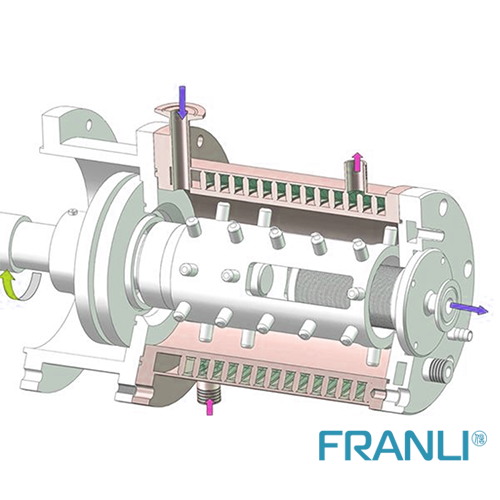
Hydraulic TRH type
Hydraulic Three Roll Mill, which is a full hydraulic auto-controlling system equipment. 1- Cooling system: an individual cooling system for each roller. 2- hydraulic control: hydraulic control pressure blades, roller gaps, etc. 3- Optional installation:PLC system with SIEMENS touching screen, FRANLI engineer set formulas of grinding according to different viscosity materials.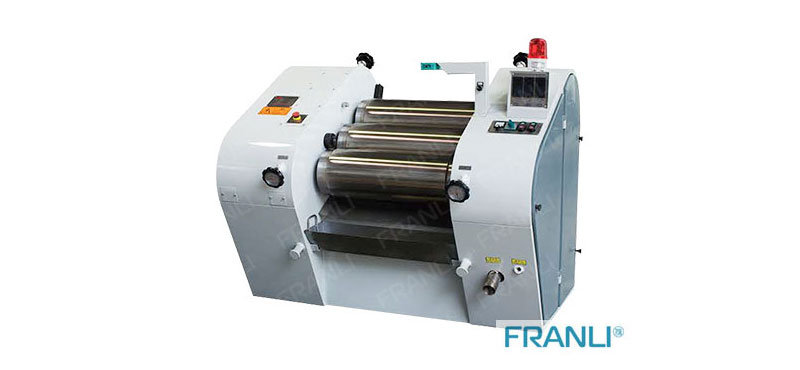 Lab TRL Type
Lab three roll mill with PLC Touching Screen,which is widely used in medicine, ink, cosmetics, and electronics industries. Small size, digital number auto-operation. Which smarter, safer, and faster. Which is customized for different material requirements.
Lab TRL Type
Lab three roll mill with PLC Touching Screen,which is widely used in medicine, ink, cosmetics, and electronics industries. Small size, digital number auto-operation. Which smarter, safer, and faster. Which is customized for different material requirements.
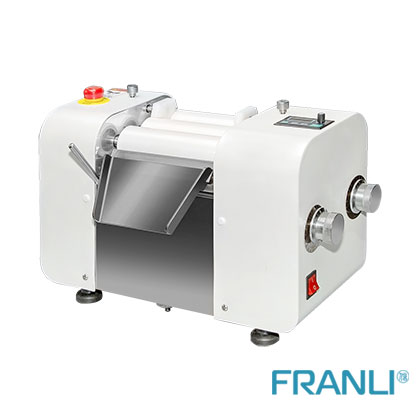
Vertical type for Grinding Powder
Also, we have a vertical three-roll mill for grinding powder and chocolate. We have 3 rollers, 4 rollers, and even 5 rollers, which are all vertical types. We export to the soap industry and chocolate companies.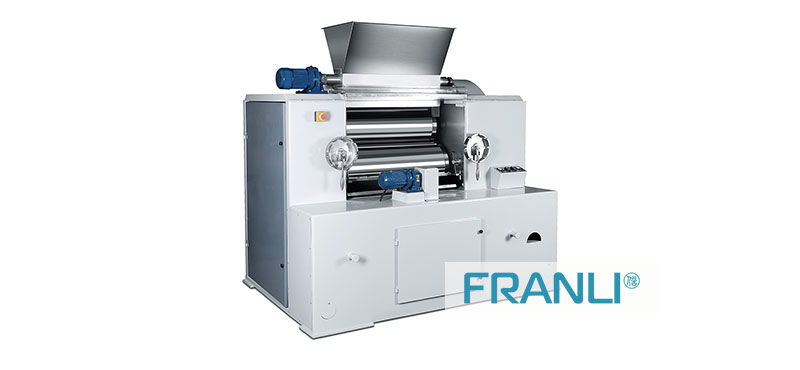
Heating type
Franli also offers a heating hydraulic three roll mill for rubber, EVA, PVS, and color masterbatch. As this type of machine grinds high viscosity material, we specially design the gear quality. This type is been Heated by oil or steam. Franli three roll mill machine are full automatic PLC controlling, hydraulic system, stable operation, reliable quality. We choose the international brand parts. Standrad parts, ABB VFD, Siemens Motor, SKF or NSK bearings, SEW or Nord reducer. A roller is 45-55mm thickness of metal, cast steel. You can widely choose ceramic, alloy, granite rollers for your material. If you have several formulas of material, we can set up formulas in the PLC system, your workers only need to choose numbers on touching the screen, don’t need to waste time to adjust the rollers’ gap or the pressure of the blade.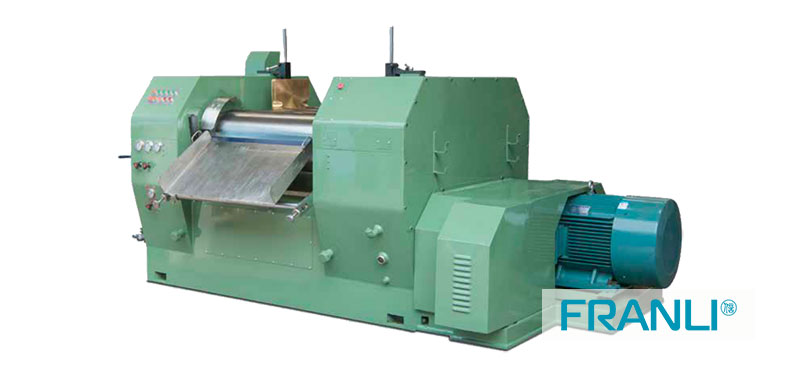 About the feeding system, we have several kinds for different viscosity of the material. Such as a feeding pressure machine, also called an extruder machine. And feeding system is installed on the top with a single reducer motor. While if your material is a crazy high viscosity, and small batch production, we suggest that it’s better to feed material into rollers by manual scrapper.
Our package is a standard export wooden case, and our factory is close by shanghai port, fast delivery, and cheaper shipment. Welcome to connect with us. we will choose a suitable three roll mill for your material. Of course, you are welcomed to send us your material for the first trial before offering an order.
About the feeding system, we have several kinds for different viscosity of the material. Such as a feeding pressure machine, also called an extruder machine. And feeding system is installed on the top with a single reducer motor. While if your material is a crazy high viscosity, and small batch production, we suggest that it’s better to feed material into rollers by manual scrapper.
Our package is a standard export wooden case, and our factory is close by shanghai port, fast delivery, and cheaper shipment. Welcome to connect with us. we will choose a suitable three roll mill for your material. Of course, you are welcomed to send us your material for the first trial before offering an order.
Related production lines
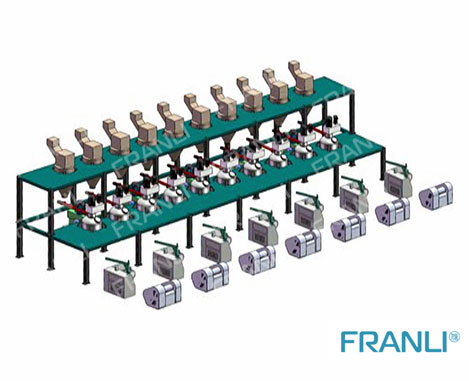
Offset Ink machine line
FRANLI is specialized in offset ink full line production for 20+ years. Helped customer save the cost, save the man power, also save the space.

Offset Ink machine line
FRANLI is specialized in offset ink full line production for 20+ years. Helped customer save the cost, save the man power, also save the space.

Offset Ink machine line
FRANLI is specialized in offset ink full line production for 20+ years. Helped customer save the cost, save the man power, also save the space.

Offset Ink machine line
FRANLI is specialized in offset ink full line production for 20+ years. Helped customer save the cost, save the man power, also save the space.
Technical Parameter
Guidelines For Kneader
Can you use the kneader mixer for different applications? Do you have a clear idea about how the kneading mixer works? There is more demand for disperser and mixer mixers to save the cost of the raw materials. The customers can try to preserve the human cost if they can find the suitable kneader of their choice. The best customer services are offered to the users, so there is no need to compromise on the quality of the twin-screw kneader. It is possible to find a safe working design if you are interested in opting for the best kneader mixer.
The FRANLI z blade mixer is a mixer used for evenly mixing semi-solid materials. The mixer contained a U trough bowl with two Z shape blades that rotate in opposite directions for accurate blending of particles. Moreover, the blade mixer has an ideal capacity motor and gearbox designed according to the features of the products and process. Z blade mixer is a form of kneader blade used in most of the mixing processes.
Why given the word Z blade?
This is because of the kneading mixing shaft which is in a “Z” shape whereby both ends of the mixing shaft are on a conical head. The conical head of the Z-blade mixer on one side of the mixing shaft is connected to the motor outside the mixing tank by a rotating shaft, and the conical head on the other side of the mixing shaft is attached to the inner wall of the tank through the rotating shaft. This kneading is more effective at mixing viscous materials and is equipped with conical heads at both ends of the mixing shaft, reducing the gap between the outer tip of the conical shaft and the mixing tank. The Z mixer has a simple structure, which enhances high mixing efficiency.
How does the Z blade mixer function?
The Z blades rotate at different speeds parallel to each other, making the materials move from one end of the mixing shaft to the other end. The tearing and shearing action of the particles against the rotating blades and the side walls causes the disintegration of particles into smaller sizes. Discharging processed particles is attained by shaking the container or through the valves at the bottom of employing an extrusion screw beside the container.
In a tangential design, the blade rotates tangentially within the channel. Front blades spin faster than the back blades, usually in a 3: 2 ratio. Tangent blades work best in high viscosity materials such as adhesives, rubber compounds, dyes, and pigments.
The sigma kneader is the perfect mixer for high viscosity fabrics, sticky and sandy slurry.
The hydraulic lid opening system in the z-arm mixer empties the hydraulic trough by tilting the hydraulic bowl directly into the container.
The laboratory z-blade mixer works better in laboratories or research facilities for product development, testing, and quality control. It is one of the smaller types of z-blade mixers. It is estimated to have a working capacity of 455 liters.
What are the advantages of a laboratory z blade mixer?
It is very flexible. Due to its availability in two sizes: 3-litre and 4-liter working capacities, with variable speed drive. Optional extras include vacuum construction, heating/cooling jacket, energy meter, temperature reading, and single-phase power supply.
It is easy to clean. It is easy to clean mixing troughs and rotating blades without using other tools.
Safety fully locked for safe use. Operating this blade mixer is very safe.
The laboratory z blade mixers are used to prepare Chorleywood bread, pastries, puff pastry, cream fillings, cake mixes, thick dough, fondant, marzipan, frosting, licorice, caramel, and more, Adhesives, bitumen, ceramics, clay, carbonaceous materials, dyes, explosives, toothbrushes, adhesives, gums, graphite, DMC, carbon pencils, putties, resins, soaps, rubber compounds, pharmaceuticals, and many others.
How does the kneader extruder work?
The kneader extruder consists of a set of counter-rotating kneading blades and loose screws. During the mixing cycle, the blades spin parallel to each other, and the blending screw spins in opposite directions, constantly introducing new material into the mixing blade. When the mixing / kneading cycle is complete, the screw is flipped over, and the mixed material is removed from the mixing zone through the discharge nozzle for further processing or packaging.
Advantages of z blade mixers
· It ensures complete mixing of materials.
The sigma kneader consists of two blades that extend the entire length of the mixer. One arm is above the other. When turned on, the upper arm rotates much slower than the lower arm. These actions ensure that the ingredients are not left unmixed. Due to the different blade speeds and rotation patterns, all materials placed in the mixer are removed and mixed
· Can process different types of materials
Another advantage of the sigma mixer extruder is that it can process a wide variety of materials. The z mixer is designed to handle liquids, semi-liquids, solids, or lumps and wells. Sigma blades are not suitable for solids, but they can work in a pinch. But other than that, the mixer works well with all types of materials.
· Can process different loads of material
The ultimate advantage of the sigma mixer extruder is that it can handle large amounts of material. Many mixers are equipped to handle specific loads such as 100 liters of liquid or ten cubic meters of additional material. If you add too little to the mixer, you may not be able to mix well.
The sigma blade mixer is a device for blending, kneading, vulcanizing, and polymerizing highly viscous materials. It is used in various fields such as manufacturing silicone rubber, sealants, rubber food bases, pharmaceuticals, chewing gum, etc.
Franli is the largest exporter and manufacturer of Z blade mixers. These kneading mixers work best in mixing and kneading high viscous materials. If you want your materials to be blended efficiently, this company is the best suit for you.
Related production lines

Offset Ink machine line
FRANLI is specialized in offset ink full line production for 20+ years. Helped customer save the cost, save the man power, also save the space.
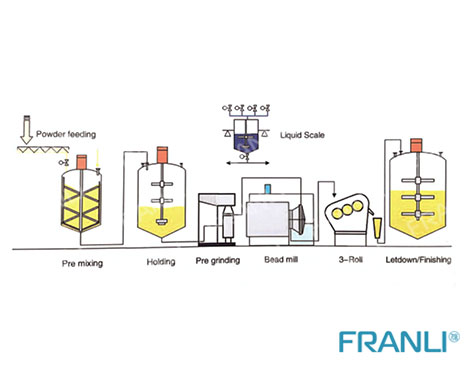
Offset Ink, UV Ink machine line
The FRANLI engineering company, offer the full set of UV INK Production Line, we can make the full drawing according with your factory size, formulas, weather and safety system.
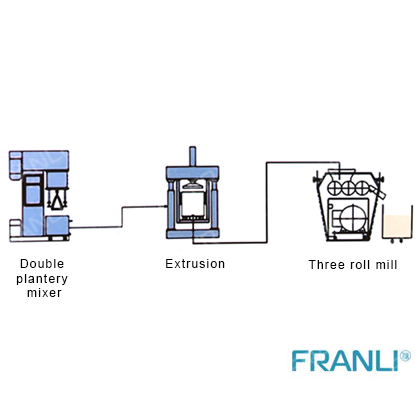
PCB INK Machine line
FRANLI supplies all equipments for the production of PCB inks, from the powder feeding station to the filling part.
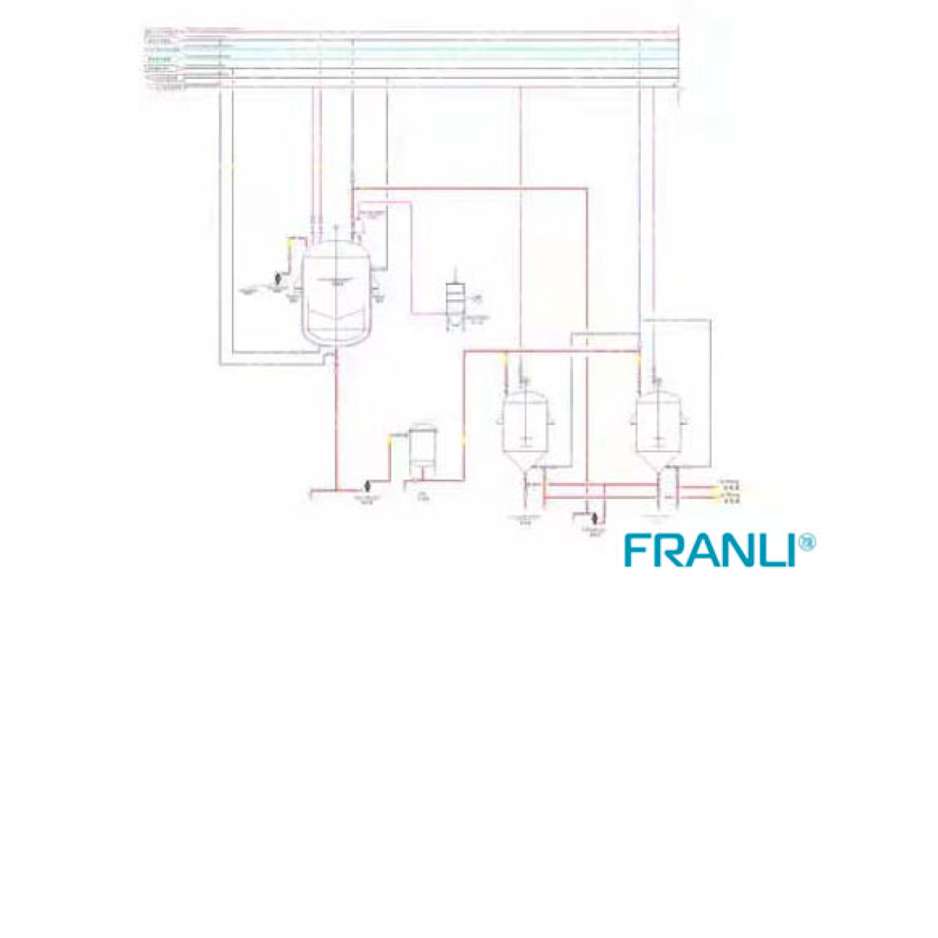
EW-pesticide line
The EW production line mainly mixes raw materials, solvents, and emulsifiers through a reactor (oil-based).
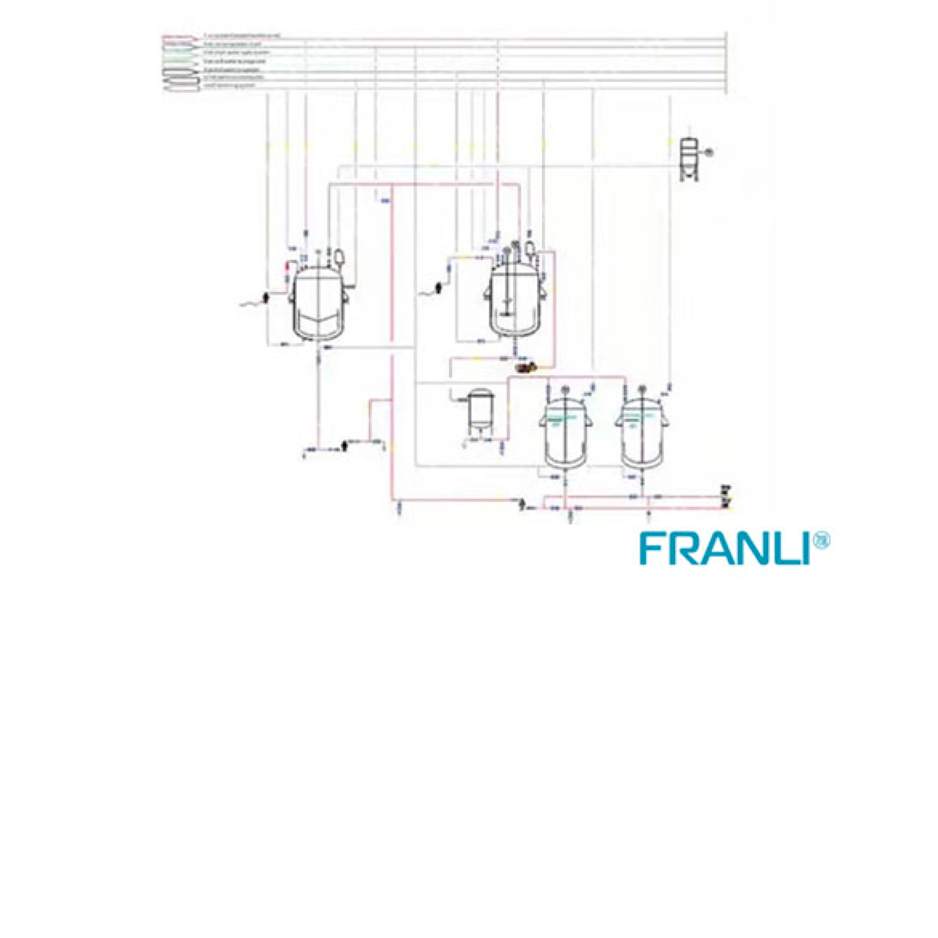
SL_EC pesticide line
The EC production line is mainly composed of an agitator mixer, bag filter, filling machine, etc.
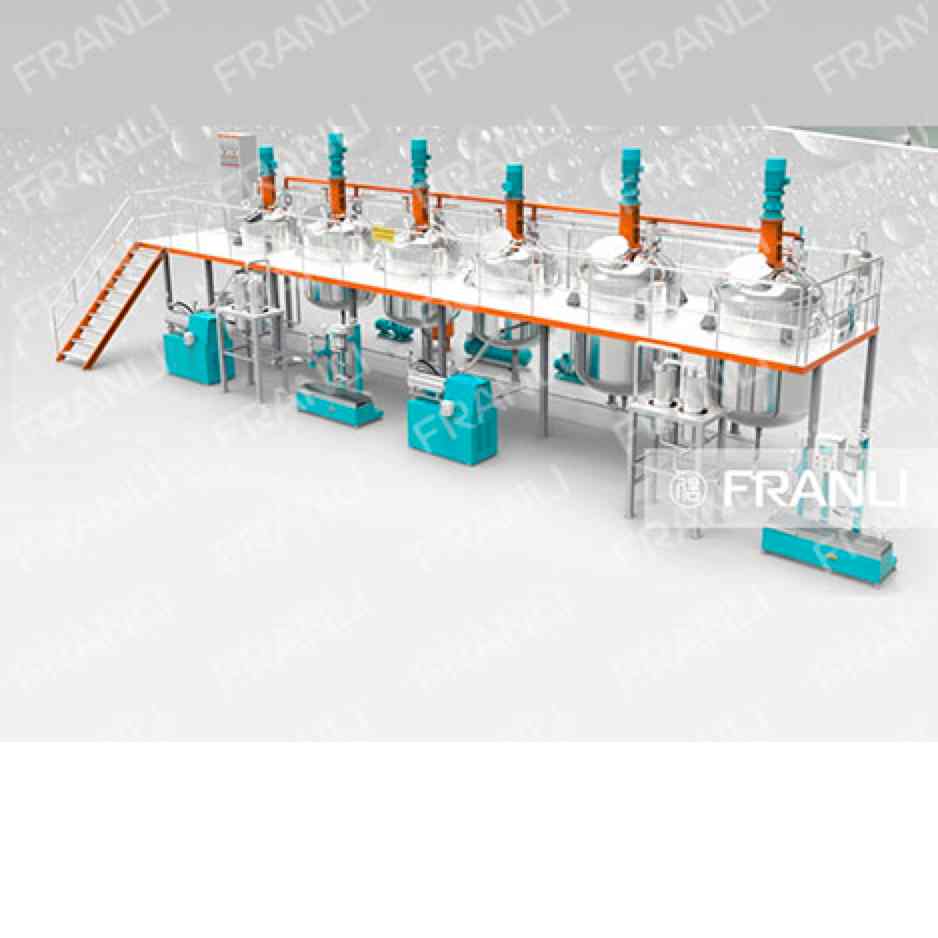
Automotive Paint machine line
The automotive paint machine line is mainly for the production and grinding of automotive paint, Automotive paint has many layers, such as Primer/electrophoretic layer, Medium coat, Colored coat, and Clearcoat.
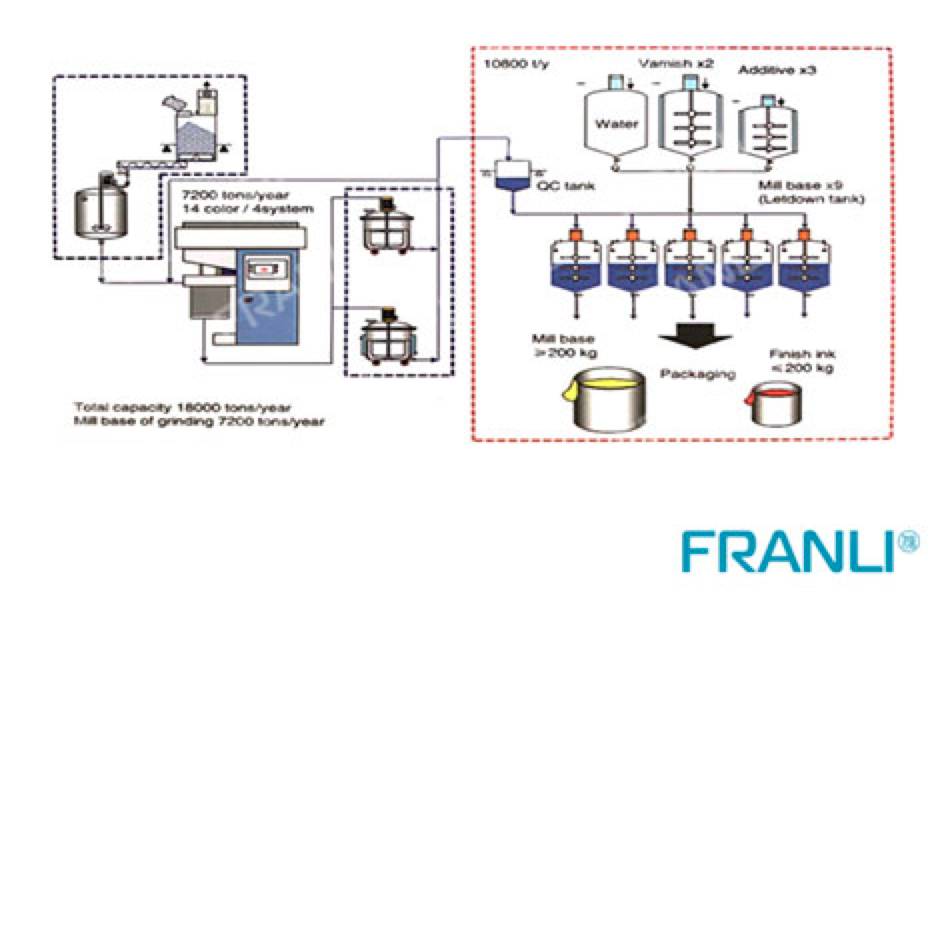
Digital Ink machine line
Franli has professional experience for digital ink machine line, we offered hundreds customers to expand production, or build up new project.
